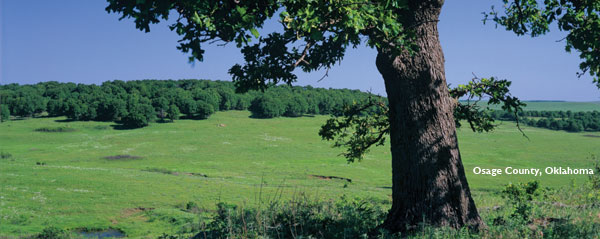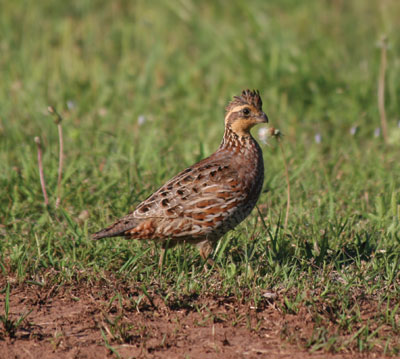|
back Home Cross TimbersGateway from forest to prairie Biodiversity of Oklahoma series |
|
Northern Bobwhite
Colinus virginianus
|
© John Polo, Oklahoma Biological Survey, Tinker Air Force Base
|
Order: Galliformes (grouse, quail, and allies) Family: Odontophoridae (new world quail) Bobwhite are small quail with rounded bodies, small heads, rounded wings, and short tails. They are intricately patterned in brown, rufous, buff, and black. Males have a bold black-and-white head pattern. Females have a buffy throat and eyebrow. Northern Bobwhites travel in coveys and run across the ground from the shelter of one shrubby patch to another. When they are flushed, they explode into flight with quick wingbeats and then duck into the nearest cover. Northern Bobwhites live in open pine forests, overgrown fields, shrubby areas, and grasslands. They respond well to areas managed with prescribed fire, which helps to maintain an open, grassy ground layer. Because of its history as a game bird, the Northern Bobwhite is one of the most intensively studied bird species in the world. Scientists have researched the impacts of various human activities, from pesticide application to prescribed burning, on both wild and captive bobwhites. Despite their sharp population decline, it’s still possible to find Northern Bobwhite in fields, rangelands, and open forests over much of their range. Their call is one of the easiest to learn of all bird sounds. The two sharp, whistled notes really do sound like “bob-white!”—and the call carries a long distance, so if bobwhite are around you will probably know it long before you see them. Look for these unobtrusive birds pecking and scratching on the ground near to or underneath vegetation—or, more likely, bursting upward into a short flight of flurrying wings if you get too close. From the Cornell Lab of Ornithology All About Birds. |
|
back to species list |
PDF of all species profiles
|

